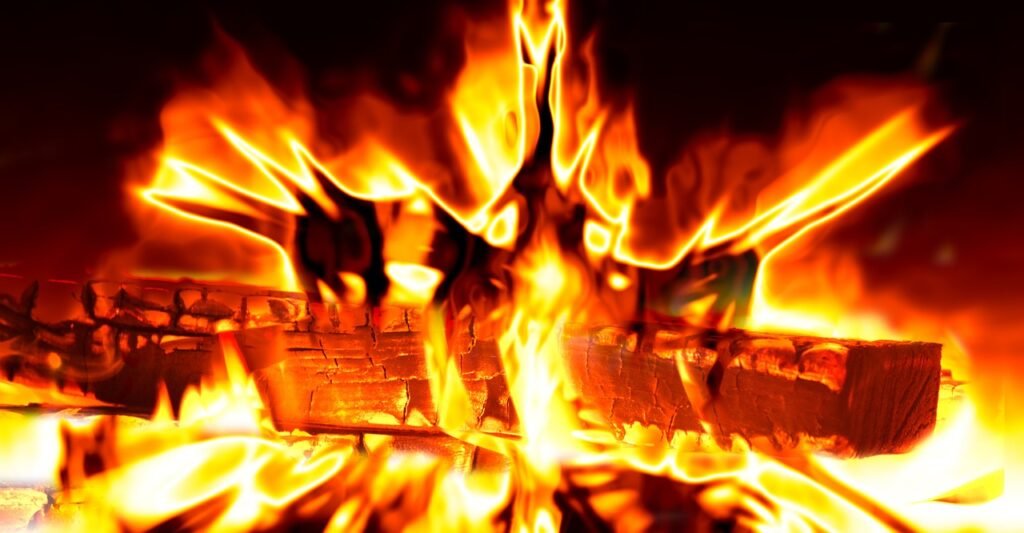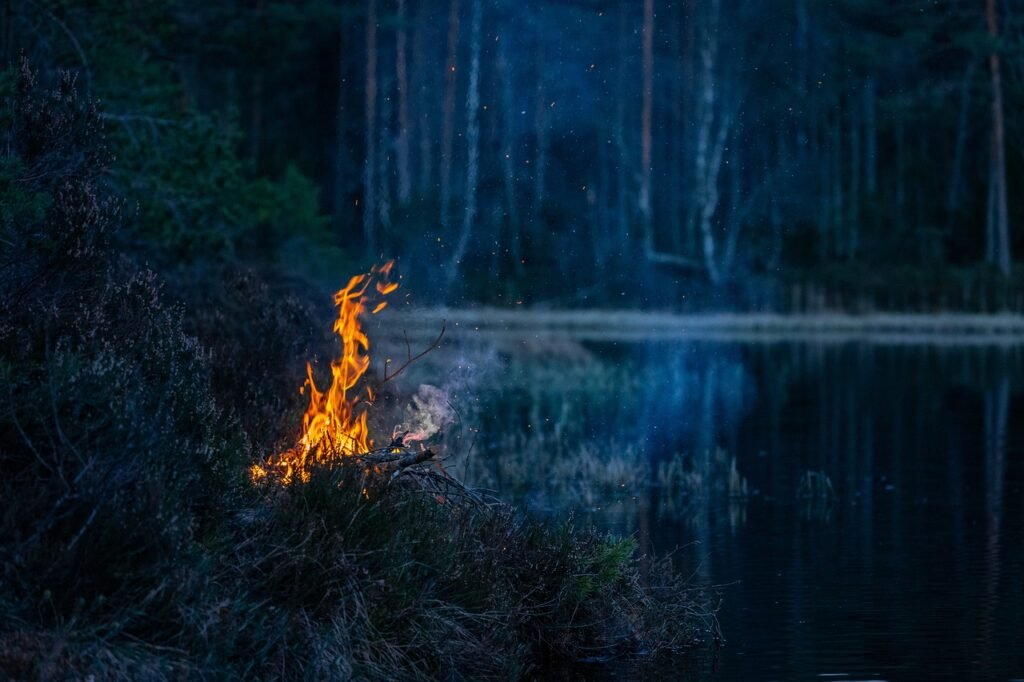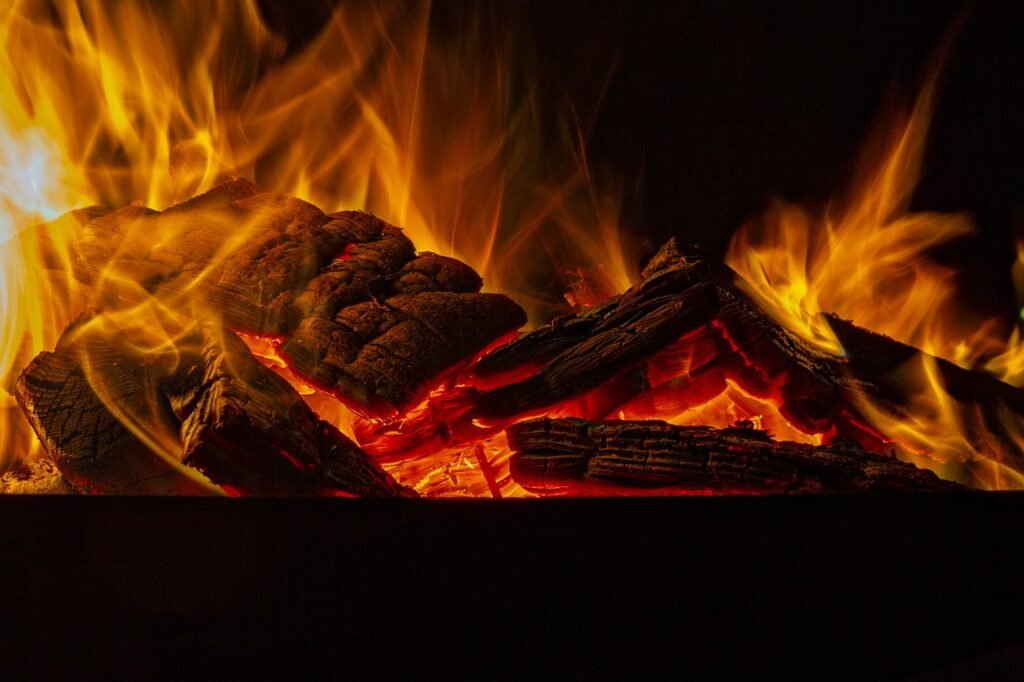Imagine cozy winter nights spent by a crackling fire, with the warm glow filling the room. To maintain the allure and safety of your fireplace, it’s essential to keep it sparkling and well-maintained throughout the year. From regular cleaning and inspections to proper storage of firewood, this article will provide you with valuable tips to ensure your fireplace remains a centerpiece of comfort and beauty in your home. So, grab a cup of hot cocoa and let’s dive into the world of year-round fireplace maintenance!
Regular Cleaning
When it comes to maintaining a sparkling fireplace, regular cleaning is essential. This not only keeps the aesthetic appeal intact but also ensures the safety and efficiency of your fireplace. Here are some important aspects to focus on:
Clearing Out Ashes
Before you begin the cleaning process, it’s vital to remove all the ashes from your fireplace. Use a small shovel or a specially designed ash vacuum to carefully scoop out the ashes and dispose of them in a fire-resistant container. Make sure the ashes have cooled completely before handling them. This step ensures that there is enough space for proper air circulation and prevents the accumulation of debris.
Sweeping the Chimney
Sweeping the chimney is a crucial task that should be done regularly to prevent the buildup of soot and creosote. You can either hire a professional chimney sweep or do it yourself with the help of a chimney brush and rod. Start from the top of the chimney and work your way down, making sure to cover all areas. Repeat the process until the soot and creosote are completely removed. This step not only enhances the efficiency of your fireplace but also reduces the risk of chimney fires.
Removing Soot and Creosote
In addition to regular chimney sweeping, it’s important to remove any soot and creosote that may have accumulated on the interior walls of the fireplace. Use a stiff-bristle brush or a chimney cleaning product specifically designed for this purpose. Scrub the walls gently but thoroughly, making sure to reach all corners and crevices. This not only improves the appearance of your fireplace but also helps maintain proper airflow for efficient combustion.
Checking and Replacing Parts
To ensure the longevity and functionality of your fireplace, it’s crucial to regularly check and replace any worn-out or damaged parts. Here are a few components that require your attention:
Inspecting the Chimney Cap
The chimney cap is an essential part of your fireplace system as it prevents rain, debris, and animals from entering the chimney. Regularly inspect the chimney cap for any signs of damage, such as cracks or rust. If you notice any issues, it’s important to replace the cap promptly to maintain proper ventilation and prevent potential structural damage.
Examining the Firebox
The firebox is the area where the fire burns, and it’s important to inspect it regularly for any signs of damage or deterioration. Look for cracks, loose bricks, or missing mortar. If you spot any issues, it’s crucial to have them repaired by a professional to ensure the safety and efficiency of your fireplace.
Checking the Damper
The damper is responsible for controlling the airflow and heat retention in your fireplace. Regularly check the damper to ensure it’s opening and closing properly. If you notice any difficulties or obstructions, it’s important to address them promptly to avoid smoke or carbon monoxide buildup.
Replacing Damaged Bricks or Mortar
Over time, the bricks and mortar in your fireplace can deteriorate due to the constant exposure to heat. Check for any loose or damaged bricks, as well as any crumbling mortar. These issues can lead to poor combustion, heat loss, or even structural damage. If you notice any problems, it’s advisable to consult a professional to replace or repair the damaged bricks and mortar.

This image is property of pixabay.com.
Keeping the Surrounding Area Clean
In addition to cleaning the fireplace itself, it’s important to keep the surrounding area tidy and free from potential hazards. Here are a few tips to ensure cleanliness and safety:
Clearing Debris and Flammable Materials
Regularly inspect the area around your fireplace for any debris, such as fallen leaves or branches, that can pose a fire risk. Remove any flammable materials, such as curtains or furniture, from the immediate vicinity of the fireplace to prevent accidental ignition. This simple step can help ensure the safety of your home and loved ones.
Removing Dust and Cobwebs
Dust and cobwebs can accumulate on the mantel, walls, and surrounding surfaces of your fireplace. Regularly dusting and cleaning these areas not only keeps your fireplace looking clean and inviting but also prevents the buildup of potential allergens. Use a soft cloth or a duster to remove the dust and a vacuum cleaner with a brush attachment to tackle any cobwebs.
Storing Firewood
Proper storage of firewood is essential to maintain its quality and to ensure a steady supply of dry, seasoned wood for your fireplace. Here are a few tips for storing firewood effectively:
Choosing the Right Firewood
When selecting firewood, opt for hardwoods such as oak, ash, or maple, as they burn longer and produce more heat. Avoid softwoods like pine or cedar, as they tend to burn quickly and create excess smoke. Additionally, make sure the firewood is properly seasoned with low moisture content, as this will ensure efficient combustion and reduce the buildup of creosote in the chimney.
Storing Firewood Properly
To maintain the quality of your firewood, it’s important to store it properly. Choose a location that is well-ventilated and protected from rain or snow. Stack the firewood off the ground on a sturdy rack or pallet, allowing air to circulate and moisture to evaporate. Cover the top of the stack with a tarp or waterproof cover, but leave the sides open for adequate airflow. This will keep your firewood dry and ready for use throughout the year.

This image is property of pixabay.com.
Maintaining the Fireplace Glass
If your fireplace has glass doors or a glass front, keeping it clean and well-maintained enhances both aesthetic appeal and safety. Here’s how you can maintain the fireplace glass effectively:
Cleaning the Glass
To clean the glass, wait for the fireplace to cool down completely. Mix a solution of equal parts water and vinegar or use a specialized fireplace glass cleaner. Apply the mixture to the glass and let it sit for a few minutes to loosen any soot or residue. Gently scrub the glass with a soft cloth or a non-abrasive sponge. Rinse thoroughly with clean water and dry with a lint-free cloth. This regular cleaning routine will help prevent the glass from becoming cloudy or stained.
Preventing Stains and Damage
To prevent staining or damage to the glass, avoid burning materials that release excessive smoke or emit sparks, such as wet or green wood. Additionally, never use abrasive cleaners or scouring pads on the glass, as they can scratch the surface. By taking these precautions and regularly cleaning the glass, you can maintain its clarity and keep it looking sparkling clean.
Using the Right Fuel
Using the right fuel not only ensures optimal performance but also minimizes the risk of chimney fires and other safety hazards. Here are a few considerations when it comes to fuel selection:
Avoiding Freshly Cut Wood
Freshly cut or green wood has a high moisture content, which makes it difficult to burn efficiently. Burning green wood not only produces more smoke but also leads to the accumulation of creosote in the chimney. To ensure clean and efficient combustion, it’s best to avoid using freshly cut wood and opt for properly seasoned firewood instead.
Burning Seasoned Firewood
Seasoned firewood refers to wood that has been dried for at least six months to a year, resulting in lower moisture content. This type of wood burns more efficiently, producing less smoke and creosote. The seasoned firewood also minimizes the buildup of harmful substances in the chimney, reducing the risk of chimney fires. When purchasing or harvesting firewood, ensure it has been properly seasoned before use.
Using Clean-Burning Fuel Options
In addition to firewood, there are other clean-burning fuel options available for fireplaces, such as natural gas or pellets. Natural gas fireplaces offer convenience and cleanliness, as they eliminate the need for firewood and produce minimal creosote. Pellet stoves use compacted sawdust or biomass pellets, which are highly efficient and eco-friendly. Consider these alternatives if you prefer a low-maintenance and environmentally friendly fireplace.

This image is property of pixabay.com.
Safety Measures
Fireplace safety should always be a top priority. By implementing the following safety measures, you can enjoy your fireplace with peace of mind:
Installing Carbon Monoxide and Smoke Detectors
Carbon monoxide is a colorless and odorless gas that can be produced by the incomplete combustion of fuels in your fireplace. Install carbon monoxide detectors near your fireplace and in sleeping areas to provide early warning in case of a leak. Additionally, ensure you have smoke detectors properly installed on each level of your home and test them regularly to ensure they are functioning correctly.
Having Fire Extinguishers and a Fire Safety Plan
It’s important to have readily accessible fire extinguishers in case of a small fire outbreak. Make sure you have the correct type of fire extinguisher for your fireplace and that it is fully charged. Familiarize yourself and your family with the proper use of fire extinguishers. Additionally, have a fire safety plan in place, including an evacuation route and a designated meeting point outside your home. Regularly discuss and practice the fire safety plan with all household members.
Yearly Inspection by Professionals
While regular maintenance is essential, it’s also important to have your fireplace and chimney inspected by certified professionals at least once a year. Here’s what you should consider:
Hiring a Certified Chimney Sweep
A certified chimney sweep has the expertise and knowledge to thoroughly inspect and clean your chimney. They can identify any potential issues, such as blockages, cracks, or structural damage, and address them promptly. Hiring a professional chimney sweep ensures that your fireplace is in good working condition and minimizes the risk of chimney fires or other safety hazards.
Checking for Structural Issues
During the yearly inspection, professionals will also assess the overall structural integrity of your fireplace and chimney. They will look for signs of damage, such as loose bricks, deteriorated mortar, or crumbling flue liners. Identifying and addressing these structural issues in a timely manner can prevent further damage and ensure the longevity and safety of your fireplace.
Preventing Wildlife and Nesting
To ensure the smooth operation of your fireplace, it’s important to prevent wildlife from entering and nesting in your chimney. Here are a few effective measures:
Installing a Chimney Cap or Screen
Installing a chimney cap or screen acts as a barrier, preventing animals, birds, and debris from entering your chimney. Choose a cap or screen with the appropriate mesh size to prevent even the smallest animals or birds from finding their way in. Regularly inspect the cap or screen for any damage and replace it if necessary.
Regularly Checking for Nesting Materials
Animals, such as birds and squirrels, may attempt to build nests in your chimney. Regularly check for any signs of nesting materials, such as twigs, leaves, or animal droppings. Remove any nesting materials promptly and consider installing deterrents, such as a wire mesh, to discourage animals from returning.
Maintaining Proper Ventilation
Proper ventilation is crucial for the efficient operation of your fireplace. Here are a few key aspects to consider:
Keeping Air Vents Clear
Ensure that the air vents in your fireplace and the surrounding area are clear of any obstructions. Blockages can hinder the flow of air, affecting the combustion process and reducing the overall efficiency. Regularly check and clean the air vents to ensure proper ventilation and optimal performance.
Controlling Indoor Humidity
Burning wood in your fireplace can release moisture into the indoor environment, leading to increased humidity levels. High humidity can result in condensation and the growth of mold or mildew. To control indoor humidity, monitor and maintain a reasonable humidity level by using a dehumidifier when necessary. Proper ventilation and utilizing exhaust fans in bathrooms and kitchens can also help remove excess humidity.
By following these comprehensive year-round maintenance tips, you can keep your fireplace sparkling, safe, and highly efficient. Regular cleaning, proper fuel selection, and professional inspections will ensure that your fireplace remains a cozy and inviting centerpiece in your home for years to come. Happy fireside days!




